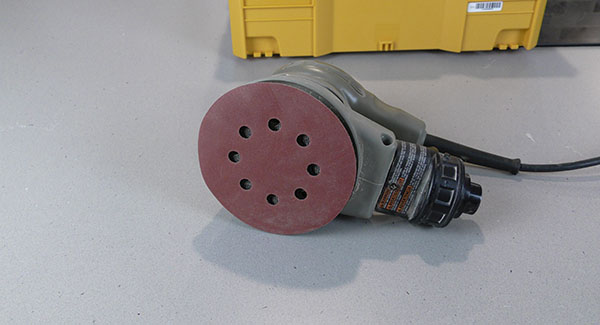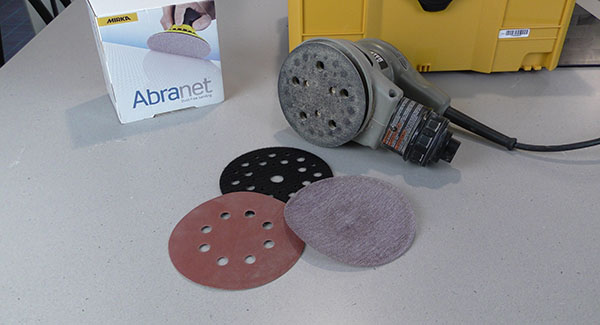3 Benefits of 2Sand Sander Pad Protectors
Posted by The Team at 2Sand on 12 09 2021
Hook and loop random orbit sanders come with the hook part molded into the face of its pad, so it seems logical that you should place a disc directly on the sander pad and start sanding. If that is the case, why do sander pad protectors exist and why does 2Sand.com sell them?
Sander pad protectors are interface discs with hook on one face and loop on the other. You place them directly onto your sander pad and then connect the sanding discs to the pad protector. By why would you do that? It turns out that using pad protectors provides three important advantages for your sander: longer pad life, better dust collection, and more flexible choices in sanding discs. Let’s look at each in turn.

Longer pad life
The hook and loop pad on your sander will serve you well, but it is made to be replaced. Each time you peel off a disc, the hooks take a little damage, and eventually they no longer hold your discs adequately. Because sander pad protectors mount to the sander’s pad and then the discs mount to the pad protector, the hooks on the sander pad protector are taking the damage with each sanding disc change, not the hooks on your sander pad. The pad protector remains on the sander, so very little wear happens on the more expensive, harder to change part.
The process of sanding also generates a fair amount of friction, causing heat damage to the plastic hooks. Again, let this damage happen to the pad protector instead of your random orbit sander’s factory sanding pad.

Better dust collection
The interface between the hook and loop is not a solid one; there are many spaces that allow air and dust particles to flow between the two. A dust extractor or shop vac is designed to remove dust using a lot of air flow with relatively little suction. Adding this air flow between the sander pad, sander pad protector, and the sanding discs helps to pick up dust at the edges of the sanding disc and through the holes in the disc. If you are using a mesh sanding disc like Abranet, this added airflow makes less of a difference since air flows throughout the disc.

Flexible disc choices
Most random orbit sanders have several dust collection holes through the pad, typically 5, 8, or 9 holes, and sanding pads are typically purchased with a matching hole pattern. You can buy 5-hole pad protectors as well as sander pad protectors with 8-holes. In an ideal world, all the sanders in your shop would use the same discs, but the world is seldom ideal. There are times when you may want to use sanding discs on hand with dust holes that are different from your sander. The pad protector makes this more practical.
2Sand sells sander pad protectors with a number of hole patterns in them to work with a wide range of sander models. This allows you to position the disc over as many holes as possible, even if you cannot get a perfect match. The partial alignment of the holes, along with the spaces in the hook and loop interface as mentioned above, will provide the best possible dust collection even if it is not perfect. In an ideal world, you will log into 2Sand.com and get the right pads delivered, but this trick can get you through on the job site.

Although the hook and loop pad on your sander is replaceable, using a sander pad protector will save you time and money, improve your dust collection, and even allow for use of sanding discs with a different hole pattern if needed. That’s a lot of benefit from an inexpensive accessory.
